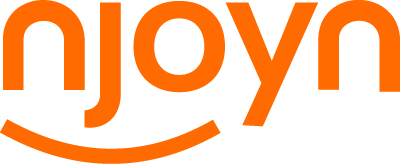
5 Tips to go from Interview to On-boarding with the Right Candidate
Finding the right applicant isn’t always easy. When you post a job opening today, it seems as if hundreds of applications start flooding in. Before you know it, you are inundated with resumes. Not only do you end up stressed out, but you get overwhelmed and confused at how to approach the ever-growing number of applicants.
It doesn’t have to be as complicated as you might think. An Applicant Tracking System (ATS) can easily help you go from interview to onboarding in no time. We are going to cover some tips that will allow you to hire faster, and get the right candidate:
- How Applicant Tracking Systems save you time in the hiring process
- Get to know qualifies applicants
- Successful interviewing
- How to be prepared before meeting qualified candidates
- Strategies to give good news and bad news
- Applicant Tracking Systems get rid of the unqualified candidates.
One of the first things you need to do is go through all of the applications and resumes and get rid of any candidates who aren’t qualified. The Applicant Tracking System can do this for you. Most often this is where businesses waste a lot of time, and resources are not used appropriately. An ATS scans resumes based on keywords, phrases and qualifications that you specify for the system.
54% of all job applications contain falsified information – which is more than half of all applications – just in the hopes of getting the job. By weeding through the applications here, you are doing yourself a huge favour! You can proceed to the next phase of the interview and onboarding process confidently.
- Get to know the qualified candidates.
Next, you want to spend some time going through the potential applicants who are qualified, and conduct pre-interviews (so to speak). While it might be called a pre-interview, you aren’t actually talking to the candidate yet; you are simply reviewing the candidates who are qualified for the position, and seeing who else you can weed out based on the various onboarding criteria you are looking for. This can also help you modify your search as you continue to use the ATS.
- Call qualified candidates to get an interview.
Next, call qualified applicants to book an in-person interview. Whilst calling to book an interview, ask key questions, and remember to listen in for:
- Excellent or alarming communication habits
- Hesitance from candidates
- Their qualifications, availability, experience, etc.
This is the first opportunity for you to speak to the applicant and determine who doesn’t meet your criteria before proceeding to the next phase of the interview and onboarding process.
- Get ready to meet the candidates.
This is where you get the chance to meet the candidate to see if they meet your criteria. While many people are great at interviews over the phone, that isn’t always the case for an in-person interview. At this phase of the interview process, you can determine if the candidate is someone whom you want to proceed with onboarding. Again, this is an opportunity to learn how to adjust the skills that you enter into the ATS.
Remember that whilst you are conducting an interview, the interviewee is also looking at reasons to join your company. Moreso, you want them to be able to envision themselves at your company as a long term goal.
- Give both good and bad news appropriately.
When you make the decision to hire a candidate, you want to call them right away, and proceed with the onboarding process to schedule their orientation, and go over the process involved. With an ATS you have the ability to send over an email with all the necessary documents and files to complete a smooth, quick and efficient hiring process.
If you aren’t going to hire the individual, you want to let them know as quickly as you can, so they can proceed with looking for work elsewhere. An ATS lets you send out an email that goes to every candidate that wasn’t selected.
Fact is, new hires who go through a structured onboarding process like the one above tend to be 58% more likely to end up staying with a company longer than three years. When an employee goes through the various interview and onboarding stages, they tend to feel accomplished, and they are a cut above the rest of the applicants.
If you are interested in getting an Applicant Tracking System book a free demo with us today!
Search
Most Popular Posts
- 5 Recruitment Challenges Public Organizations Struggle With
- 5 Tips to go from Interview to On-boarding with the Right Candidate
- ‘People Enablement’ Is the Human-Resources Trend You Can’t Ignore
- Challenges The City of St. Albert Faced Before Implementing an Applicant Tracking System
- Njoyn’s New Interview Scheduling Module
150 Commerce Valley Drive West. Markham, ON. L3T 7Z3. Tel: +1 905 695 6560
